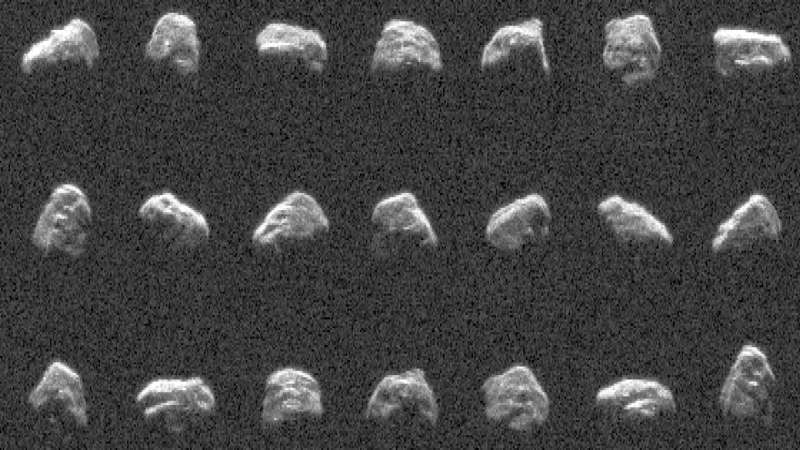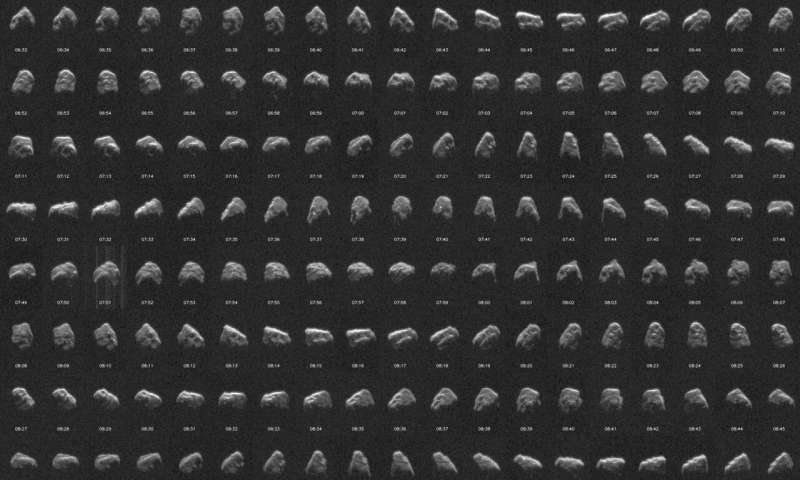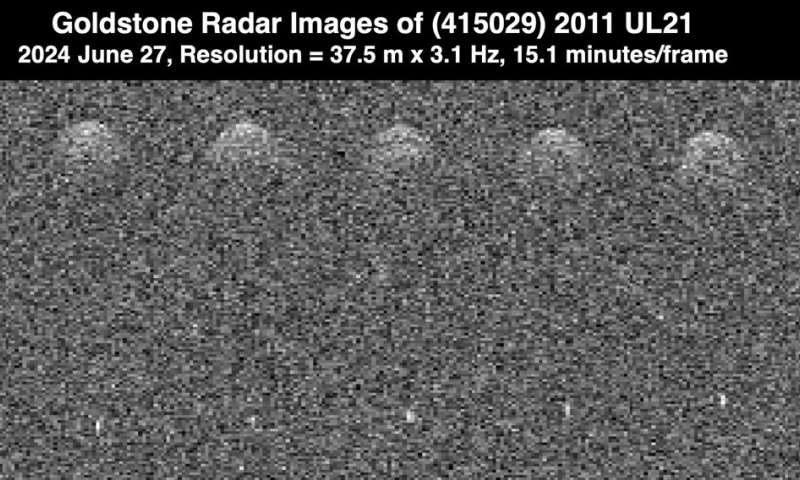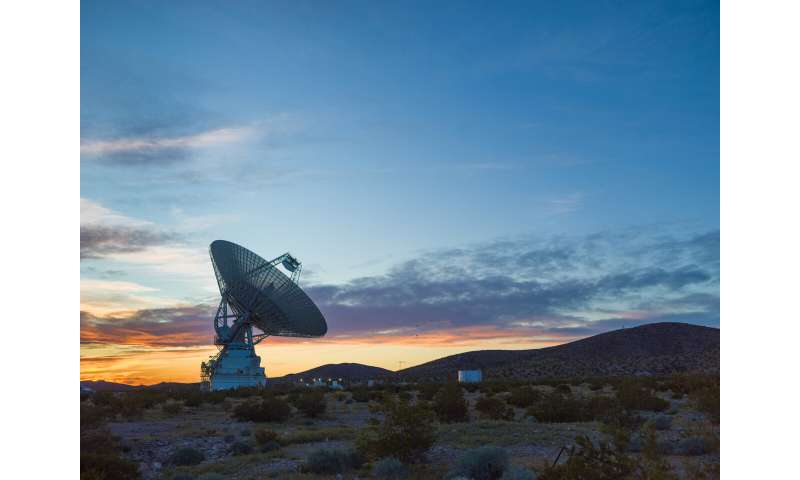
The Goldstone Solar System Radar, part of NASA’s Deep Space Network, made these observations of the newly discovered 150-meter-wide asteroid 2024 MK, which made its closest approach to Earth, about 295,000 kilometers (185,000 miles), on June 29. Credit: NASA/JPL-Caltech
The Deep Space Network’s Goldstone Planetary Radar spent a busy few days observing asteroids 2024 MK and 2011 UL21 as they passed safely by Earth.
Scientists at NASA’s Jet Propulsion Laboratory in Southern California recently tracked two asteroids as they passed close to our planet. One turned out to be surrounded by a small moon, while the other was discovered just 13 days before its closest approach to Earth. Neither near-Earth object was likely to impact our planet, but radar observations taken during these two close passes will provide valuable training for planetary defense, as well as information about their sizes, orbits, rotations, surface details, and clues about their composition and formation.
Asteroid 2011 UL21 was discovered in 2011 by the Catalina Sky Survey in Tucson, Arizona, and passed close to Earth on June 27 at a distance of 6.6 million kilometers, about 17 times the distance between the Moon and Earth. But this is the first time it has come close enough to Earth to be imaged by radar. Although the nearly 1.5-kilometer-wide object is classified as potentially hazardous, calculations of its future orbits show that it will not pose a threat to our planet in the near future.
Using the Deep Space Network’s 70-meter-wide Goldstone Solar System radar, called Deep Space Station 14 (DSS-14), located near Barstow, California, JPL scientists transmitted radio waves to the asteroid and received the signals reflected back by the same antenna. In addition to determining that the asteroid is roughly spherical, they discovered that it is a binary system: a smaller asteroid, or moon, orbits it at a distance of about 3 kilometers.
“About two-thirds of asteroids this size are thought to be binary systems, and their discovery is particularly important because we can use measurements of their relative positions to estimate their mutual orbits, masses and densities, which provide key information about how they may have formed,” said Lance Benner, a principal scientist at JPL who helped lead the observations.
-

Since close approaches by asteroids the size of 2024 MK are relatively rare, the JPL Planetary Radar team gathered as much information as possible about this near-Earth object. This mosaic shows the asteroid rotating in one-minute increments, about 16 hours after its closest approach to Earth. Credit: NASA/JPL-Caltech
-

These seven radar observations from the Deep Space Network’s Goldstone Solar System Radar show the kilometer-wide asteroid 2011 UL21 as it made a close approach to Earth on June 27, about 4 million miles away. The asteroid and its small moon (a bright dot at the bottom of the image) are outlined in white. Credit: NASA/JPL-Caltech
-

This sunset photo shows NASA’s Deep Space Station 14 (DSS-14), the 230-foot-wide antenna at the Goldstone Deep Space Communications Complex near Barstow, California. NASA/JPL-Caltech
Second close approach
Two days later, on June 29, the same team observed asteroid 2024 MK passing close to our planet at a distance of just 295,000 kilometers, or just over three-quarters of the distance between the Moon and Earth. About 150 meters wide, the asteroid appears elongated and angular, with prominent flat and rounded regions.
For these observations, the scientists also used the DSS-14 antenna to transmit radio waves to the object, but they used Goldstone’s 34-meter-long DSS-13 antenna to receive the signal that bounced off the asteroid and returned to Earth. The result of this “bistatic” radar observation is a detailed image of the asteroid’s surface, revealing concavities, ridges and rocks about 10 meters wide.
Close approaches by near-Earth objects the size of 2024 MK are relatively rare, occurring about every two decades on average, so the JPL team sought to gather as much data as possible on the object.
“This was an extraordinary opportunity to study the physical properties and obtain detailed images of a near-Earth asteroid,” Benner said.
Asteroid 2024 MK was first reported on June 16 by the Asteroid Earth Impact Warning System (ATLAS) at the Sutherland Observatory in South Africa. Its orbit was altered by Earth’s gravity as it passed, reducing its 3.3-year orbital period around the sun by about 24 days. Although it is classified as a potentially hazardous asteroid, calculations of its future motion show that it poses no threat to our planet in the foreseeable future.
Provided by Jet Propulsion Laboratory
Quote:NASA’s Planetary Radar Tracks Two Large Asteroids as They Approach Closely (2024, July 3) retrieved July 4, 2024 from https://phys.org/news/2024-07-nasa-planetary-radar-tracks-large.html
This document is subject to copyright. Apart from any fair dealing for the purpose of private study or research, no part may be reproduced without written permission. The content is provided for informational purposes only.